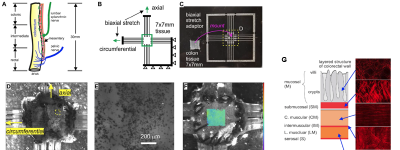Understanding the multiscale mechanics of nerve endings to address visceral pain

Mechanical distension of hollow visceral organs evokes visceral pain. To identify ‘drugable’ peripheral targets requires clarifying mechanisms of visceral sensation and pain, where biomechanics of hollow visceral organs are key. This project aims to understand the biomechanics of visceral neural encoding and sensitization as relates to chronic visceral pain. This work aims to determine: 1) tissue-level biomechanics of mucosal and muscular layers of colorectum from both control (healthy) and TNBS-treated (in pain) mice, 2) micro-mechanical environments of individual colorectal sensory nerve endings from both control and TNBS-treated mice, and 3) the impact of nerve ending stress/strain on functional heterogeneity of visceral neural mechanosensation and sensitization via multiscale modeling and simulation.